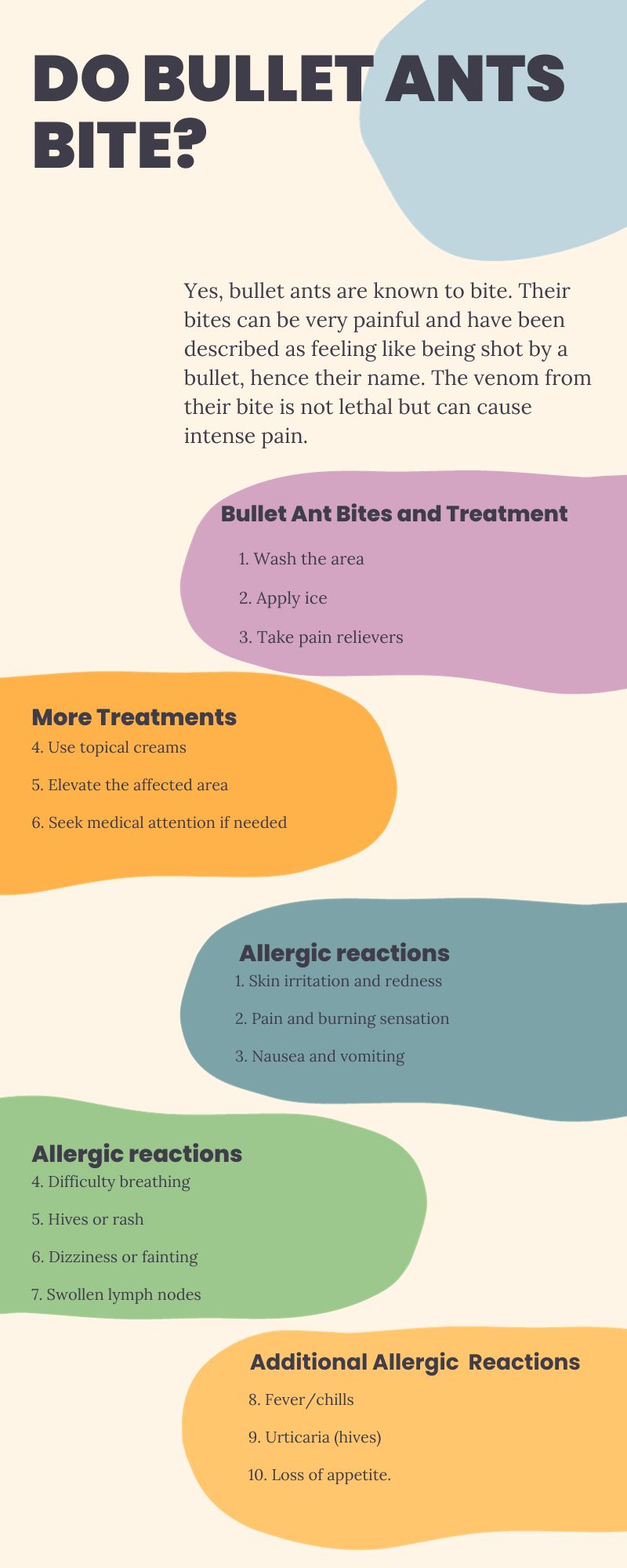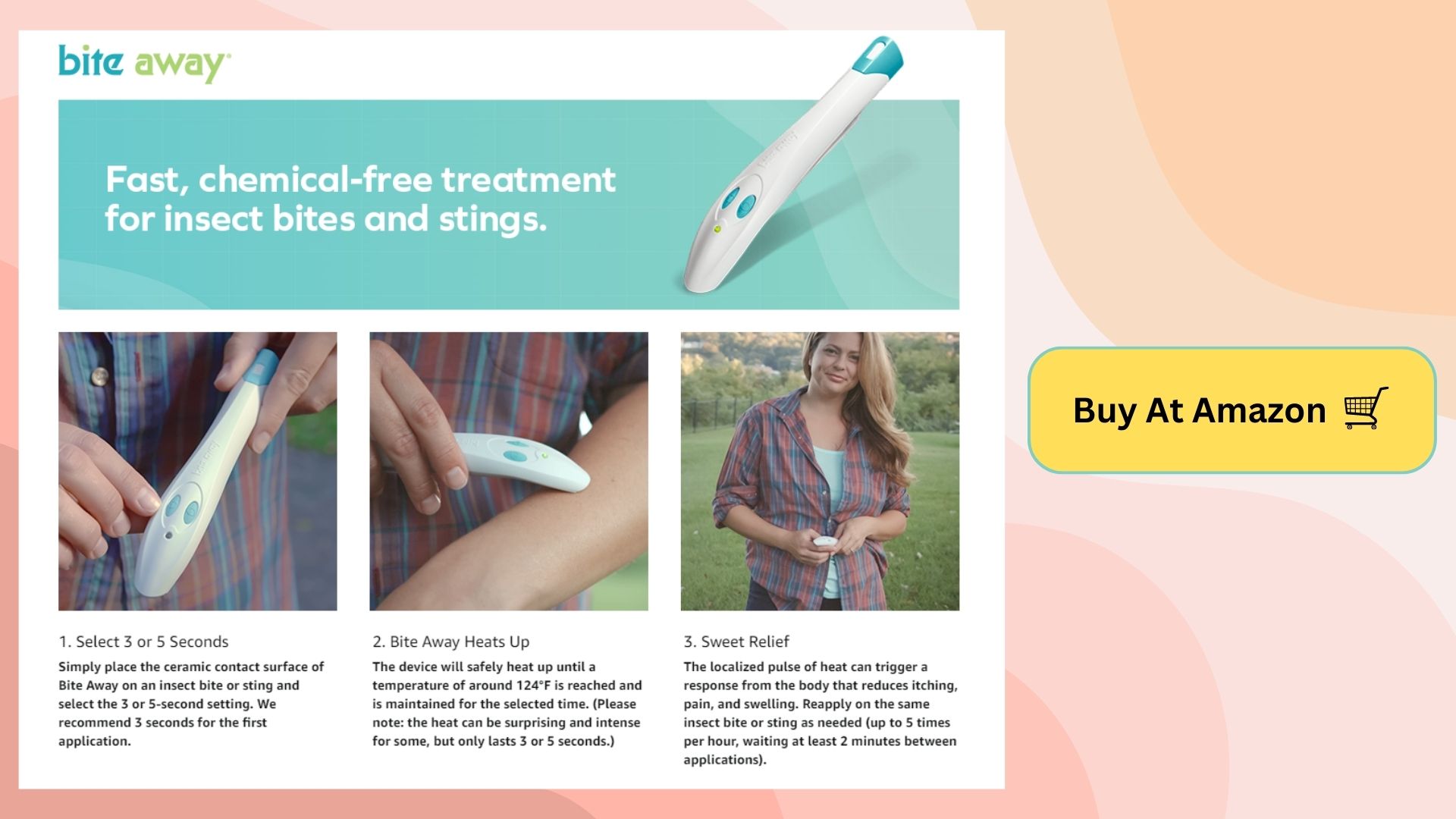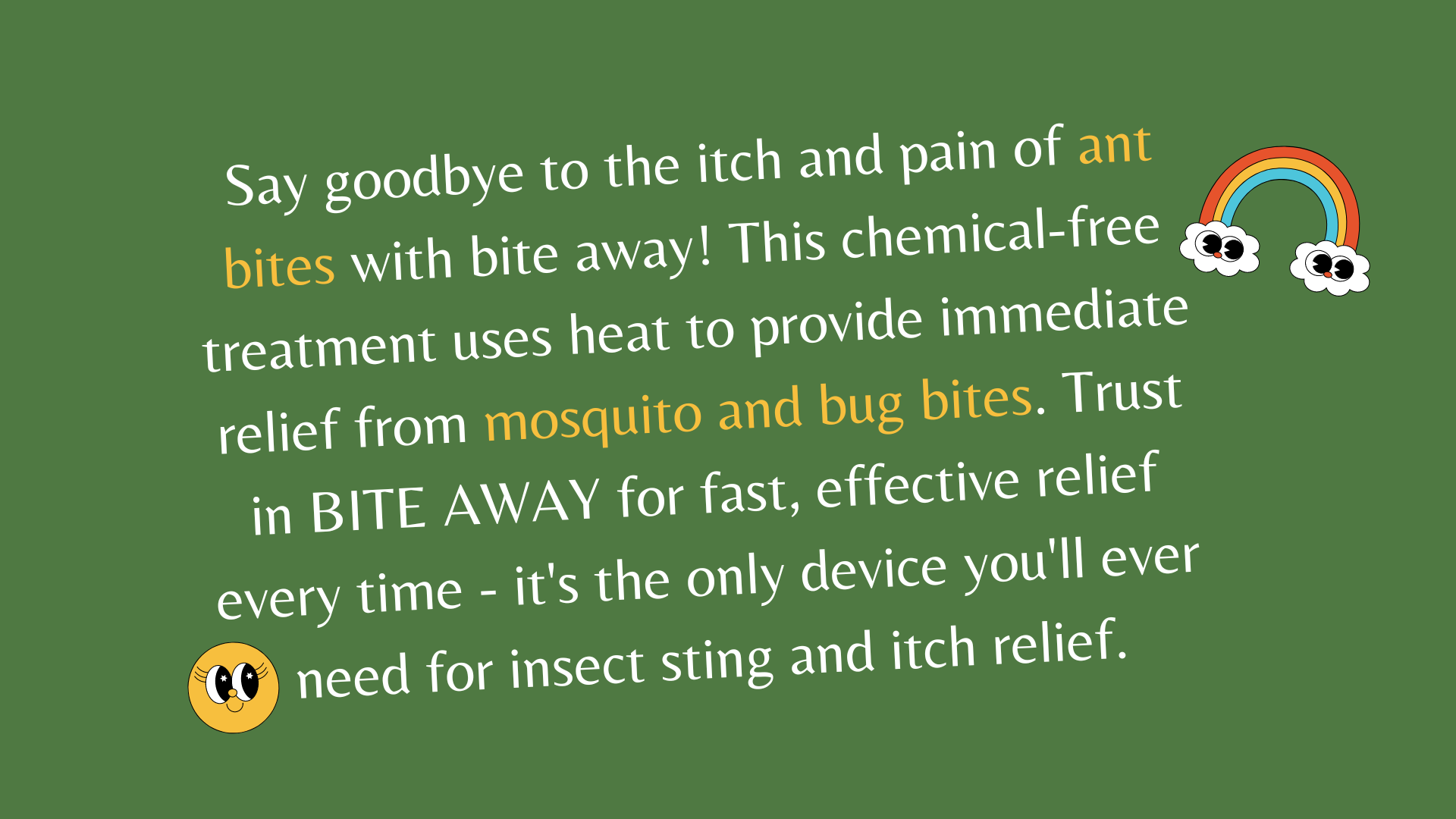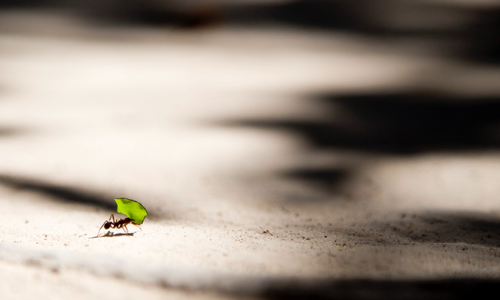Your PERSONAL ANT-CYCLOPEDIA
Bullet Ant (Paraponera clavata)
Bullet Ant Scientific Classification
Phylum Belonging: Arthropods
Class of Belonging: Insects
Order To Which It Belongs: Hymenoptera
Family In Which It Is Located: Formicidae
Subfamily In Which It Is Located: Formicinae
Genus: Paraponera
Species: Bullet Ant (Paraponera clavata)

Post Audio Bullet Ant
The rainforest is home to an incredible array of species, each with their own unique characteristics and abilities. However, one insect stands out among the rest – the Bullet Ant. Known for its excruciatingly painful sting (This ant has gained notoriety as one of the most venomous insects in the world and even compared to the feeling of being shot by a bullet) and its importance in indigenous cultures, the Bullet Ant has become a subject of fascination and fear. From its physical appearance to its behavior and impact on the environment, there is much to learn about this tiny yet powerful creature. But beyond its intimidating reputation, this small creature has a fascinating story to tell about survival, cooperation, and adaptation. Join me as we delve into the world of this remarkable species and discover the secrets behind its powerful sting and its role in nature.
“Pest Stats”
| Color | Reddish-black |
| Legs | 6 Legs |
| Shape | Worker ants are 18–30 mm (0.7–1.2 in) long and resemble thick, reddish-black, wingless wasps. |
| Size | 18-30mm (0.7-1.2 in) long |
| Antennae | Yes |
| Region | Tropical forests Central & South America |
What does Bullet Ant Look Like?
Description
Bullet ants are large, black insects with a distinct, narrow waist and long legs. They can grow up to 1 inch (2.5 cm) in length and have a shiny exoskeleton. The head of a bullet ant is slightly flattened and has two antennae on top, as well as strong mandibles for capturing prey.
Their most recognizable feature is the bright red or orange coloring on their abdomen, which resembles the tip of a bullet hence their name. This colored patch may also have some black markings. Bullet ants have six legs that end in sharp claws for gripping onto surfaces while climbing or hunting.
Their bodies are covered in short hairs called setae, which aid in sensing vibrations and other stimuli.
Overall, bullet ants have an intimidating appearance due to their size and powerful jaws but they play important roles in maintaining balance within ecosystems where they live.
Geographical distribution
Bullet Ants are found in tropical and subtropical regions of Central and South America. Specifically, they can be found in countries such as
- Bullet Ant Brazil,
- Bullet Ant Costa Rica,
- Bullet Ant Peru,
- Bullet Ant Ecuador,
- Bullet Ant Colombia,
- Bullet Ant Bolivia and
- Bullet Ant Mexico
Bullet Ant Distribution Map In Us
In the United States specifically: – Southern Texas (specifically around Big Bend National Park) is considered to be the only area where bullet ants can be found. This location is at the extreme edge of their range into North America.
Bullet Ant Southern Texas
Bullet Ant Distribution By Country
South America: Bullet ants have the widest distribution in this continent. They are found throughout most countries in the northern half of South America.
Central America: Bullet ants are also present in several countries of Central America including Costa Rica and Panama.
North America: There is a small population of bullet ants that reside within southern Mexico.
Bullet Ant Distribution By Continent
Caribbean islands – Some species of bullet ants can be found on certain islands in the Caribbean, such as Trinidad and Tobago.
Asia – Small populations of bullet ants have been reported in Southeast Asian countries like Thailand and Malaysia.
African continent – While not native to Africa, there have been sightings of bullet ants in some African countries due to their introduction by humans or accidental transportation through goods.
Australia/Oceania – Similar to Africa, bullet ant populations have been reported on this continent due to human introduction or accidental transportations from other regions.



Join The Ant Farming Club!
If you are looking for an Ant Farm and you don’t know which one to choose, or on the other hand you already have your first ant farm, but you don’t know how to grow your colony, take care of it or feed it. Here we offer you the best tips and products to make your colony grow healthy and strong.
In the next section, you will also find advice from professionals to choose the best products on the market such as:
- Luminous Gel
- Ant Farm Sand
- LED light
- Live Ants
- Full Ant Farm Kits For Kids
Ant Farming Club is perfect for kids wanting their first ant farm or schoolteachers wanting to show their students the biology of ants in a natural habitat.
Join
Join and learn all about the world of ants and ant farming.
Products & Discounts
Find discounts and advice from professionals about the best products on the market in 2022.
Meet
Connect with people who are passionate about the world of entomology.
Do Bullet Ants Bite?
Yes, bullet ants are known to bite. Their bites can be very painful and have been described as feeling like being shot by a bullet, hence their name. The venom from their bite is not lethal but can cause intense pain, swelling, and redness in the affected area.
Bullet Ant Bites and Treatment
If you have been bitten by a bullet ant, the first step is to stay calm. The bite may be painful, but it is generally not life-threatening unless you have an allergy or are bitten multiple times.
Here are some steps you can take to treat a bullet ant bite:
1. Wash the area: Use soap and water to clean the site of the bite thoroughly. This will help prevent infection.
2. Apply ice: Placing an ice pack or wrapped ice cubes on the bite can help reduce swelling and pain.
3. Take pain relievers: Over-the-counter pain relievers such as ibuprofen or acetaminophen can help alleviate any discomfort caused by the bite.
4. Use topical creams: Applying hydrocortisone cream or calamine lotion can soothe itching and irritation from the bite.
5. Elevate the affected area: If possible, elevate your arm or leg if that’s where you were bitten by a bullet ant. This will help with swelling and blood flow to the area.
6. Seek medical attention if needed: If symptoms persist or worsen after trying these measures, seek medical attention immediately. Remember that prevention is always better than cure when it comes to insect bites, so try to avoid areas where bullet ants are present if possible.
If you do encounter them while hiking or camping in their natural habitat, wear protective clothing such as long sleeves and pants tucked into socks. In case of severe allergic reactions such as difficulty breathing, dizziness, or nausea after being bitten by a bullet ant seek emergency medical attention immediately.
Allergic reactions to Bullet Ant bites and stings
1. Skin irritation and redness: The area around the bite or sting may become inflamed, swollen, and itchy.
2. Pain and burning sensation: Bullet Ant bites are known for their intense pain which has been described as a feeling of being shot with a bullet.
3. Nausea and vomiting: In severe cases, an allergic reaction to Bullet Ant venom can cause nausea, vomiting, and stomach cramps.
4. Difficulty breathing: If the person is highly allergic to Bullet Ant venom, they may experience difficulty breathing due to swelling in the throat and airways.
5. Hives or rash: Some people may develop hives or a rash on their skin as part of an allergic reaction to Bullet Ant bites or stings.
6. Dizziness or fainting: Anaphylaxis is a severe allergic reaction that can occur after multiple ant bites/stings, causing dizziness and even loss of consciousness if left untreated.
7. Swollen lymph nodes: The lymph nodes near the affected area may become enlarged as the body’s immune system responds to the allergen in the ant venom.
8. Fever/chills: A fever or chills could be present along with other symptoms if there is an infection caused by scratching at the site of a Bite/sting
9. Urticaria (hives): Urticaria (nettle rash) often occurs when chemicals like histamine are released into your bloodstream during an allergy attack; this results in superficial welts appearing on your skin
10. Loss of appetite.
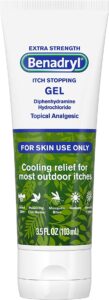
About this item
- Benadryl Extra-Strength Anti-Itch Gel temporarily relieves pain and itching associated with insect bites, minor burns, sunburn, minor skin irritations and rashes due to poison ivy, poison oak and poison sumac.
- Topical analgesic gel provides cooling, anti-itch relief from most minor pains and outdoor itches associated with insect bites.
- The cooling gel provides the relief of pain and itching associated with insect bites.

More Immediate Treatment management for Bullet Ant Bites:
Long-term Treatment management:
1. Protect your skin by wearing long-sleeved shirts, long pants, and closed-toe shoes when entering areas where bullet ants reside.
2. Be cautious when walking through vegetation and avoid contact with nest sites: Bullet ants build large nests on the ground or in trees. It’s best to avoid these areas.
3. Apply insect repellent: Applying an insect repellent containing DEET will help repel bullet ants.
4. Food and drinks should be kept covered and disposed of properly to avoid attracting bullet ants.
5. When stung by a bullet ant, stay still and do not panic or move suddenly as this may provoke more attacks from nearby ants.
6. For treatment of severe reactions or multiple stings, seek medical attention immediately.
7. Keeping your surroundings clean and free of debris can discourage bullet ants from building nests near human habitats.
8. When traveling to an area where bullet ants are prevalent, consult local experts about potential risks and how to protect yourself.
9. Respect nature: Bullet ants play an important role in the ecosystem, so it’s important to respect their presence while taking necessary precautions.

About this item
- Benadryl Extra-Strength Anti-Itch Gel temporarily relieves pain and itching associated with insect bites, minor burns, sunburn, minor skin irritations and rashes due to poison ivy, poison oak and poison sumac.
- Topical analgesic gel provides cooling, anti-itch relief from most minor pains and outdoor itches associated with insect bites.
- The cooling gel provides the relief of pain and itching associated with insect bites.

YOU CAN ALSO LISTEN HERE!
Audio Bullet Ant 2


Natural Behavior Bullet Ant
When we think of ants, we often imagine them as small, harmless creatures running around looking for food. However, there is one species of ant that defies this perception and has earned the reputation of being one of the most terrifying insects on the planet, of course, we are talking about the mighty bullet ant.
This insect, whose scientific name is Paraponera clavata, may seem innocent at first glance, but its natural behavior has earned it the notorious title of being one of the most painful and dangerous creatures in the world. However, beyond its reputation as an aggressive and dangerous animal for humans. The truth is that this small arthropod has a fundamental role in the environment and its biological impact is immense.
In this section, we will tell you everything you need to know about this amazing warrior of nature.
Behavior Of Bullet Ants
In terms of behavior, bullet ants are highly social insects that live in large colonies consisting of thousands of individuals.
They have a strict hierarchy within their colony, with a queen at the top who lays all the eggs and is responsible for reproducing.
Bullet ant workers are tasked with various duties such as foraging for food, caring for young larvae and defending the colony from predators or other threats. They communicate using pheromones and can also use visual cues to convey information to each other.
One interesting behavior exhibited by bullet ants is their ability to form chains when traveling between trees or crossing water bodies. This involves linking their legs together through mandibular locking and forming long chains that allow them to safely cross difficult terrain without falling or getting separated from one another. Like most ants, bullet ants are omnivorous creatures and have a diverse diet consisting of small insects, fruits, nectar and even carrion.
They also exhibit symbiotic relationships with certain plants by providing protection in exchange for food sources like extrafloral nectaries. During mating season, male bullet ants will leave their home colony in search of potential mates. Once they find a suitable queen from another colony, they will mate while flying through the air before returning to their own colony where they die soon after completing this task.
Overall, natural behavior among bullet ants revolves around survival strategies such as efficient communication methods within colonies and specialized roles among workers. Their coordinated efforts help ensure the success of their colony’s growth and reproduction while also protecting themselves against threats from predators or rival colonies.

Funny Fact About Bullet Ant
A sting compared to the feeling of being shot
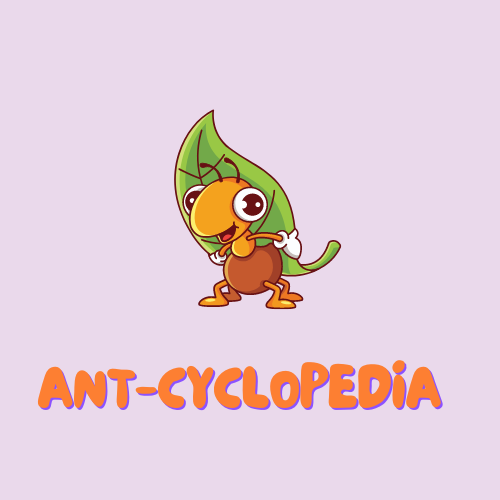
One intriguing aspect of bullet ants is their seemingly contradictory behavior and reputation.
Despite being known for their excruciatingly painful sting, they are actually quite peaceful creatures unless disturbed. The ironic twist comes from their name, “bullet ant,” which references the intense sensation of being shot when stung. Nature never fails to amaze us with its contrasting traits among different species.
Here’s another funny and interesting unknown fact about bullet ants: they are known for their intense rivalry with another species called the “warrior wasps.”
These two species engage in battles over territory and resources, and their encounters can be quite entertaining to observe. Both the bullet ants and warrior wasps are known for their painful stings, so it’s like a battle of sting power.
To settle disputes, they engage in what can only be described as a dance-off. They stand face-to-face, moving around each other and trying to intimidate their opponent. It’s almost like a tiny insect version of a standoff.
The winner of these dance-offs is determined by which insect eventually retreats. So, if you ever stumble upon a turf war between bullet ants and warrior wasps, you might witness an insect dance-off like no other!
Bullet Ant Photos And Pictures

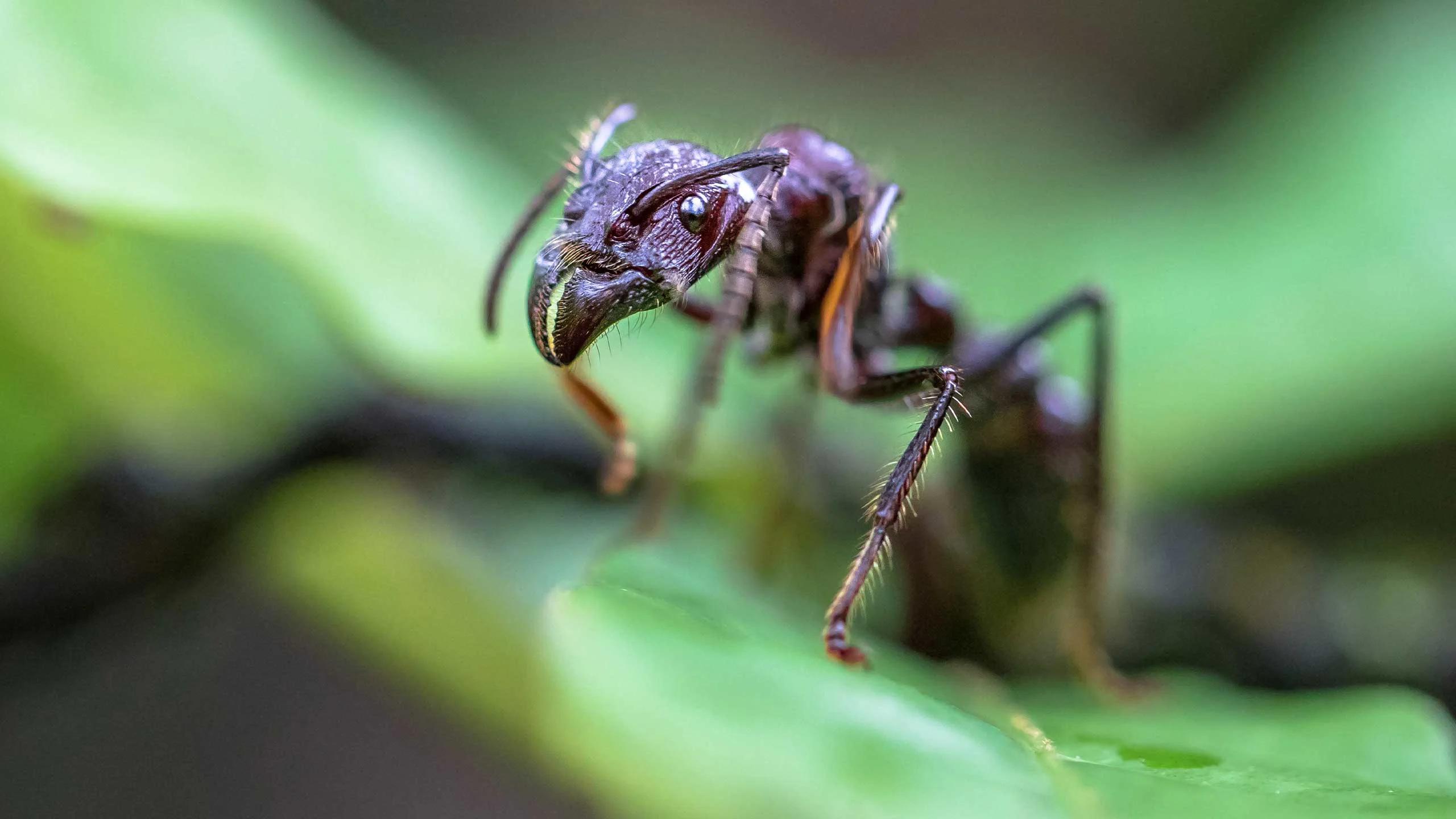
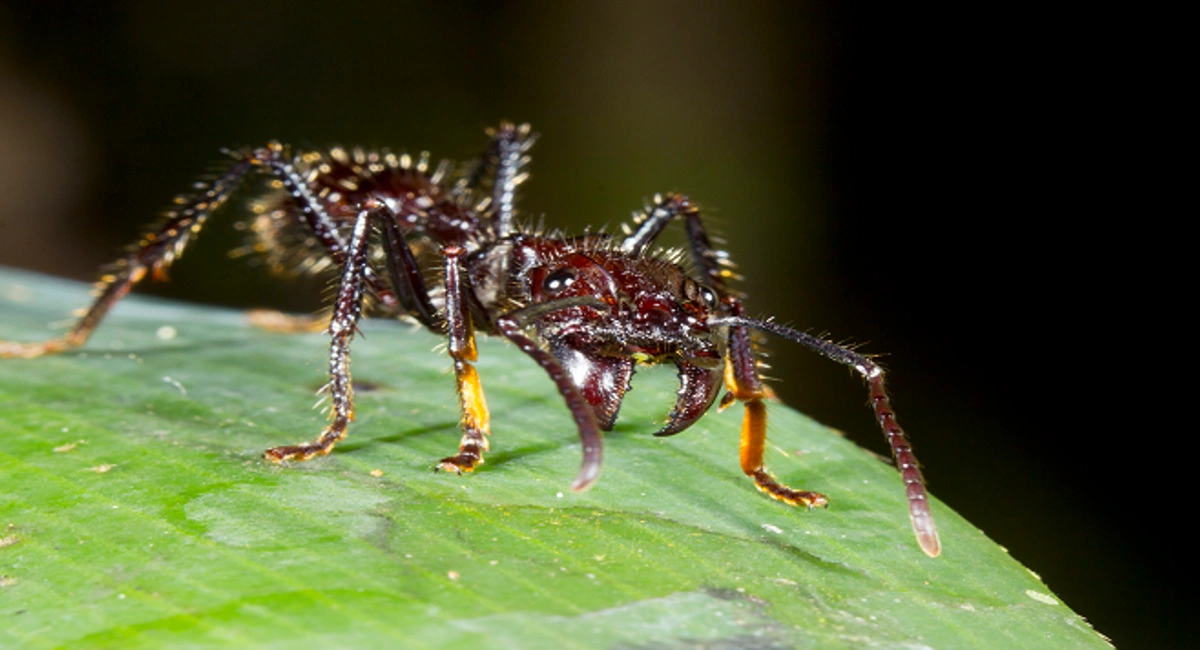

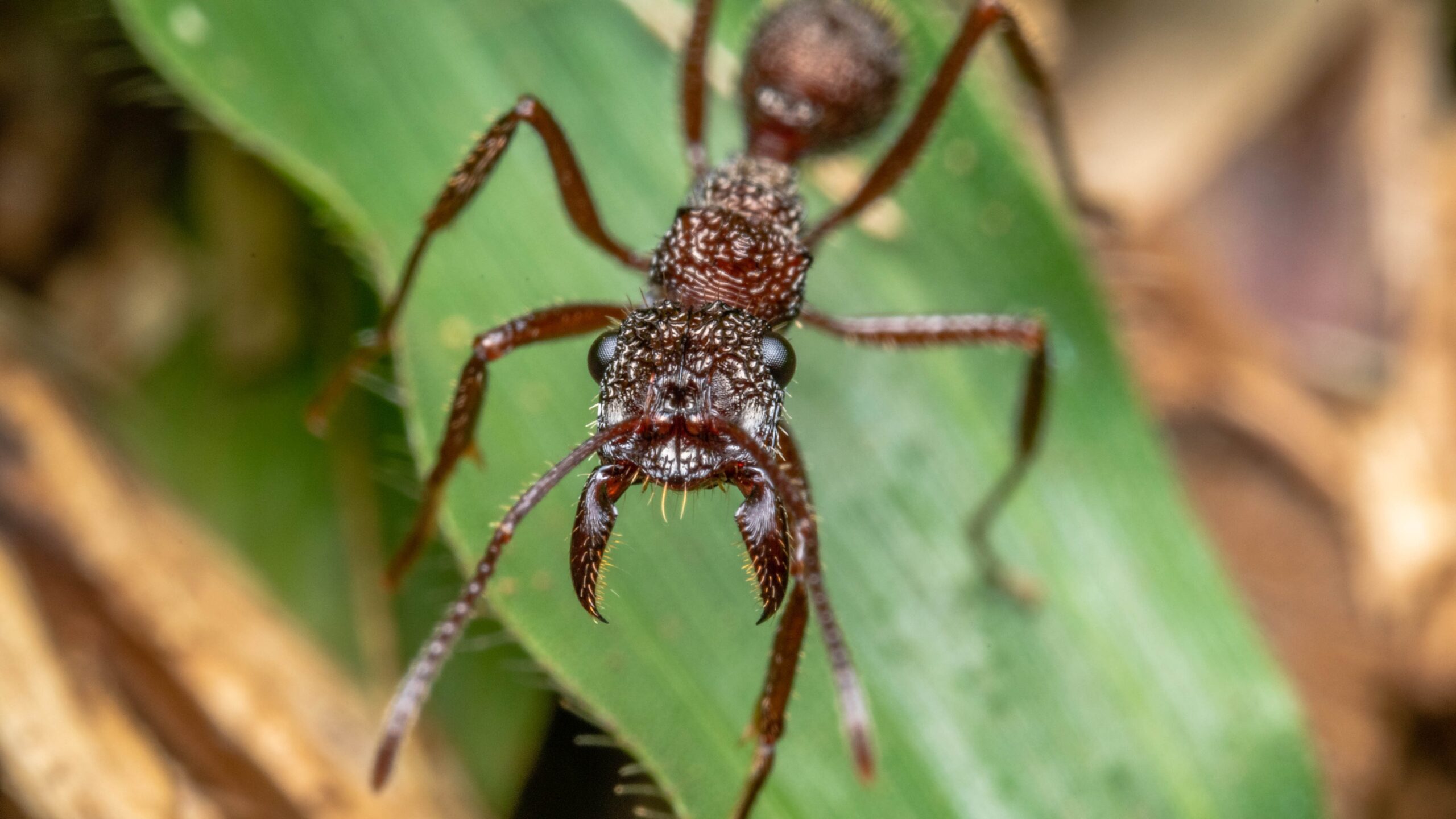
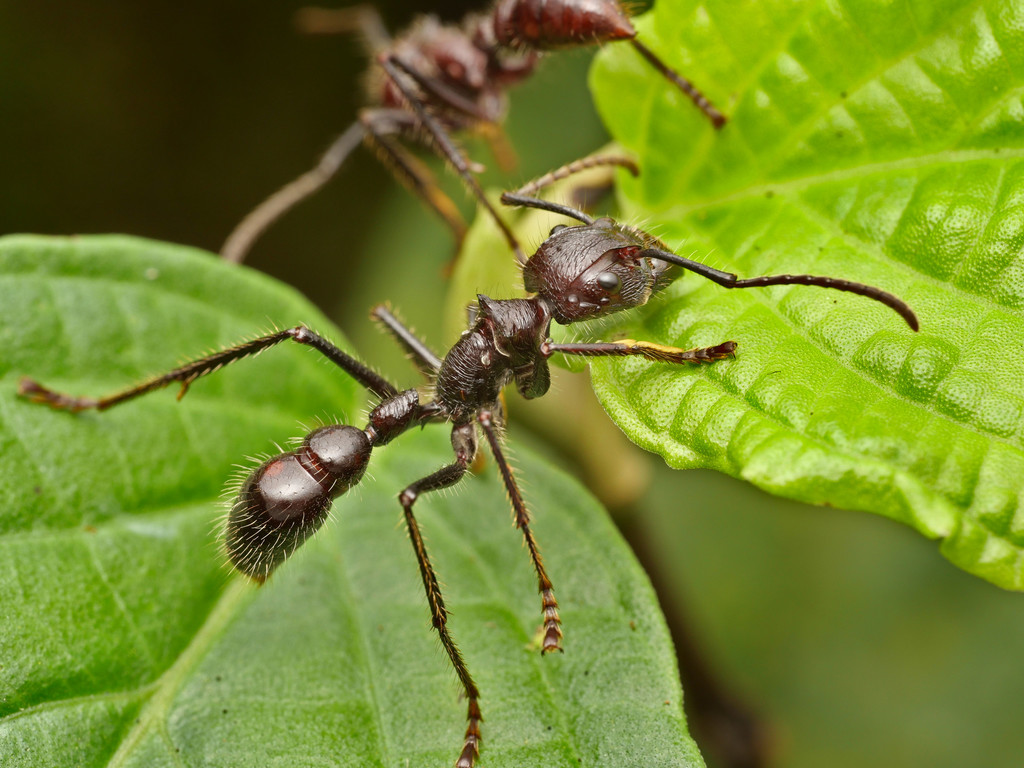
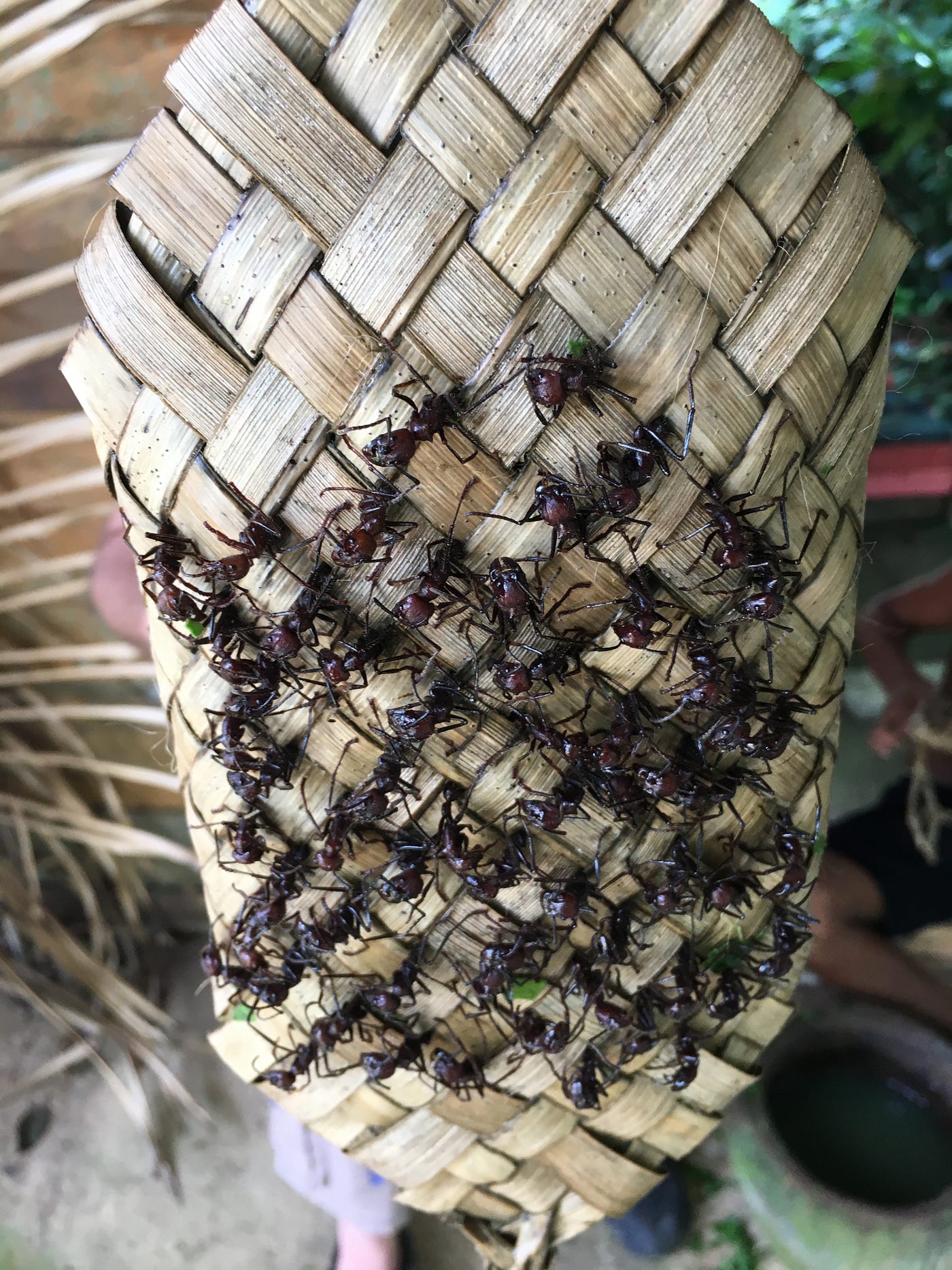
Seasonal Colony Trends [All You Should know]
Bullet Ant Reproduction (Reproductive Biology)
Beyond its notorious sting lies a fascinating reproductive biology that has baffled scientists for years. From their unique mating rituals to their peculiar way of reproducing, these ants hold many secrets waiting to be uncovered. In this section, we will delve into the reproductive biology of bullet ants and discover how they manage to thrive in some of the harshest environments on Earth.
A complex reproductive biology
The colony consists of a queen, males, and worker ants. The queen’s sole responsibility is to lay eggs, while the males’ sole purpose is to mate with the queen. Mating typically occurs during the nuptial flight, where winged virgin queens and males leave the nest in search of mates.
Once a male finds a suitable female, they will engage in mating flight and then return to the ground. After mating has occurred, both male and female wings are shed off. After returning to the ground, mated females begin their search for an appropriate nesting site. They dig small chambers underground where they start laying eggs.
In some cases, multiple queens may cooperate in founding new colonies together. The eggs laid by the queen hatch into larvae after about two weeks. These larvae are taken care of by worker ants who feed them until they pupate into adult ants after five or six weeks. Workers play an essential role in taking care of all aspects related to reproduction within the colony. They take care of feeding young brood (offspring), defending against predators or intruders entering their territory as well as tending for older members such as workers who become too old or infirm to work outside anymore.
As mentioned earlier there are also smaller ‘reproductive’ jobs like collecting food (i.e., hunting), and nursing young within specific nests called nurseries) from which these needs can be met efficiently via different caste specializations). In addition to producing new offspring through egg-laying, bullet ant colonies also have another form of reproduction known as “budding.” This process involves one or more fertile queens leaving their original nest along with a group of workers and starting a new colony elsewhere.
One unique aspect of bullet ant reproduction is that it follows what is known as a haplodiploid sex-determination system. In this system, females develop from fertilized eggs and are diploid (having two sets of chromosomes), while males develop from unfertilized eggs and are haploid (having only one set of chromosomes). This system results in a higher relatedness among female members within the colony compared to that of male members. This is because each female shares 75% of their genes with their sisters, while they only share 25% with their brothers.
Overall, the reproductive biology of bullet ants plays a crucial role in the survival and success of their colonies. The coordination between queens, males, and workers.
Habits
1. Solitary insects: Bullet ants are solitary insects and do not live in large colonies like other ant species. They prefer to live alone, although sometimes several individuals may live close together.
2. Nocturnal creatures: These ants are primarily nocturnal creatures, meaning they are most active at night and rest during the day. At night, they forage for food and perform other activities such as nest maintenance.
3. Slow-moving: Despite their intimidating name, bullet ants move slowly compared to other ant species. This is mainly due to their relatively large size and heavy exoskeleton.
4. Omnivores: Bullet ants have a varied diet that consists of both plant matter and small animals such as insects, spiders, and worms.
5. Hunting strategy: These ants use a hunting strategy known as sit-and-wait or ambush hunting where they wait patiently for prey to pass by before attacking with their powerful sting.
6. Nest-building behavior: The female bullet ant builds her own nest made of plant debris on the forest floor or in tree cavities using her mandibles (jaws). She will also line the nest with special silk produced from glands on her body to provide additional protection against predators.
7. Pheromone communication: Like all ant species, bullet ants communicate through pheromones – chemicals secreted by their bodies that allow them to send messages or signals to one another regarding food sources or potential threats.
8. Seasonal activity pattern: Bullet ants tend to be more active during the wet season when there is an abundance of food available in the form of plants and other small animals.
9. Migratory habits: Some populations of bullet ants exhibit migratory habits where entire colonies will move locations depending on seasonal changes or environmental factors such as flooding or droughts. 10. Protective behavior: When threatened, bullet ants will raise their hind end into the air displaying its stinger as a warning to predators.
If the threat persists, they will use their powerful sting which is said to be one of the most painful insect stings in the world.
Bullet Ant Environmental Impact
Their environmental impact is relatively minimal compared to other insects or animals. This is because their population size and distribution are naturally controlled by various factors such as food availability, competition with other species, and predation.
In terms of their diet, bullet ants primarily feed on small invertebrates such as spiders, larvae, and other insects. They also play a role in pollination by visiting flowers for nectar and transferring pollen between plants.
Bullet Ant Human Impact
Threats To Humans (Are Bullet Ants Harmful?)
One potential negative impact of bullet ants is their sting. The venom they inject can cause intense pain and discomfort for humans who come into contact with them. However, this is a natural defense mechanism against predators rather than an intentional attack on humans. Overall, the presence of bullet ants plays a role in maintaining balance within ecosystems through their interactions with other organisms.
As long as they are not introduced to new habitats where they can become invasive or overpopulated, the environmental impact of bullet ants remains minimal.
YOU CAN ALSO LISTEN HERE!
Post Audio Bullet Ant 3




Bullet Ant Education (Bullet Ant Life Cycle)
1. Egg Stage: The bullet ant life cycle begins when a female bullet ant lays eggs on the forest floor or inside tree cavities. These eggs are white and oval-shaped, measuring about 2-3 millimeters in length.
2. Larval Stage: After an incubation period of approximately 4 weeks, the eggs hatch into larvae. These larvae look like small, grub-like creatures with no legs or eyes.
3. Pupal Stage: As the larvae grow and develop, they enter the pupal stage where they transform into adult ants. During this stage, they are enclosed in a cocoon made of silk and their own saliva.
4. Adult Stage: After about 8 weeks in the pupal stage, adult bullet ants emerge from their cocoons fully developed and ready to take on their roles within the colony.
5. Workers vs Queens: Female workers make up most of the population within a bullet ant colony while there is typically only one queen who serves as its leader and reproductive center.
6. Life Span: Worker ants can live for several months while queens have been known to survive for up to two years.
7. Their Role Within The Colony Workers – Responsible for tasks such as nest building, gathering food sources (usually insects), caring for young ants (larvae), and defending against potential threats including other insects trying to invade their territory.
Environmental Requirements
1. Habitat: Bullet ants are primarily found in tropical rainforests, specifically in Central and South America. Therefore, replicating their natural habitat is crucial. A suitable enclosure should mimic the rainforest environment, including providing ample space for the ants to forage, nest, and establish colonies.
2. Temperature and Humidity: Bullet ants thrive in warm and humid conditions, similar to their native rainforest habitat. The temperature should be maintained within the range of 75-85°F (24-29°C), and humidity levels should be kept high, around 80-90%. This can be achieved through the use of heat lamps, misting systems, and suitable substrates.
3. Substrate: Providing a suitable substrate is vital for bullet ants’ farming success. They typically prefer a moist, sandy soil mixed with decaying organic matter, such as leaf litter. The substrate should be deep enough for the ants to excavate their nests and create tunnels.
4. Vegetation: As bullet ants are omnivorous, it’s essential to provide them with a diverse range of food sources. In their natural habitat, they feed on nectar, fruits, seeds, and small invertebrates. Including flowering plants, fruits, and sources of protein (such as insects) in their enclosure will help meet their nutritional needs.
5. Nesting Materials: Bullet ants require suitable nesting materials to construct their intricate, underground nests. Providing materials such as twigs, plant debris, and soil will allow them to build complex tunnel systems. Additionally, supply them with access points and appropriate hiding spots for security and privacy.
6. Lighting: Bullet ants are diurnal insects, meaning they are active during the day. Mimicking natural daylight conditions by providing a light cycle of approximately 12-14 hours of light and 10-12 hours of darkness can help regulate their circadian rhythm.
7. Ventilation: Proper ventilation is crucial in maintaining a healthy environment for the ants. Ensure that the enclosure has adequate airflow to prevent the buildup of excessive moisture, which can lead to mold growth or respiratory issues for the ants.Remember, farming bullet ants may be challenging due to their potent sting, which can be painful, and they are also protected species in some regions.
It is important to thoroughly research local regulations and consult with experts before attempting any such endeavor.
Bullet Ant Nutrition And Diet
As omnivores, bullet ants consume a diverse diet consisting of both plant and animal matter. This includes fruits, flowers, nectar, termites, caterpillars, and small vertebrates like lizards.
Their choice of food provides them with high levels of protein from insects and vertebrates, as well as carbohydrates from fruits and nectar. These nourishing elements contribute to their robust body structures and growth. However, due to limited research in the Amazon rainforest where these ants primarily reside, their exact nutritional needs are not fully understood.
It is believed that a specific type of bacteria or fungus may be present in their diet that aids in producing their potent venom. Further investigation into this area could shed more light on the nutritional requirements of these intriguing creatures.
Additionally, bullet ant colonies have specialized foragers designated to gather food for the entire colony. This means that not all members actively participate in acquiring meals but instead rely on others to bring it back to them.
Therefore, a varied diet rich in protein from both plants and animals appears crucial for maintaining healthy bullet ant colonies overall.
Nests and Colonies
Nesting Behavior: Bullet ants typically nest on the ground, usually under logs or rocks, but sometimes also in trees or hollow plants. The colony is usually made up of a single queen who lays eggs and several worker ants who take care of the larvae. The queen spends most of her life inside the nest, laying eggs and being tended to by the workers. The workers are responsible for building and maintaining the nest, gathering food, caring for the young, and defending the colony from predators.
Colony Structure: A bullet ant colony can range from a few hundred to thousands of individuals. They have a hierarchical social structure with different types of individuals that serve specific roles within the colony.
1. Queen: The queen is responsible for reproduction and can live up to 10 years.
2. Workers: Workers make up most of the colony population and perform various tasks such as caring for young, protecting the nest, gathering food, etc.
3. Soldiers: These larger workers have stronger mandibles used for defense against predators.
4. Foragers: These smaller workers specialize in finding food outside of the nest.
5. Nymphs/Larvae: The developing stages before becoming adult ants.
Communication: Like most ant species, bullet ants communicate through pheromones (chemical signals) that they release through their bodies to communicate with other members of their colony.
Food Sources: Bullet ant colonies are omnivorous scavengers that feed on insects, small vertebrates like lizards or frogs if they come across them while searching for food on forest floors or climbing trees.
Reproduction: Mating occurs once a year during mating swarms when winged males emerge from their nests to mate with newly emerged queens from nearby colonies. After mating takes place, the males die, and the queen establishes a new colony.
In summary, bullet ants have a complex social structure with specialized roles for different types of individuals. Their nesting behavior typically includes underground colonies under logs or rocks, and they rely on chemical communication to coordinate tasks within the colony.
Bullet Ant Queens
Here are some interesting facts about Bullet Ant Queens:
Bullet Ant Queen Appereance
1. Unique Size: Bullet Ant Queens are significantly larger than worker ants. They can measure up to 2 inches (5 centimeters) in length, making them one of the largest ant species in the world.
2. Lifespan: The lifespan of a Bullet Ant Queen is quite impressive. On average, they can live for 10 to 15 years, which is much longer than the average lifespan of other ant species.
Purpose In The Colony
3. Fierce Matriarchs: Bullet Ant Queens have an authoritarian role within their colonies. They are fiercely territorial and highly aggressive when it comes to defending their nests and territories from intruders.
4. Monogamous Partnerships: Unlike some other ant species, Bullet Ant Queens typically mate with a single male during their lifetime. These monogamous partnerships ensure genetic diversity within the colony.
5. Colony Foundation: Bullet Ant Queens is responsible for the colony foundation. After mating, the queen will search for a suitable nest site and then lay her eggs, which she cares for until the first workers emerge.
6. Wingless Queens: Once the queen has established her colony, she will lose her wings and become permanently wingless. This adaptation allows her to focus on egg-laying and caring for her developing brood.
7. Egg-Laying Capacity: A Bullet Ant Queen can lay up to 1,000 eggs in her lifetime. These eggs hatch into larvae, which are then fed and cared for by the queen and worker ants until they pupate and emerge as adult ants.
8. Cooperative Care: Bullet Ant Queens rely on worker ants to assist with rearing their young. The workers are responsible for tasks such as gathering food, caring for the brood, and protecting the nest.
9. Extreme Biological Role: The survival of the Bullet Ant colony depends on the queen’s ability to lay enough eggs, and her death can have detrimental effects on the colony’s future. In some cases, when the queen dies, workers may attempt to raise a new queen from a female larva.
Bullet Ant Queens are fascinating creatures with unique characteristics and an important role within their colonies. Through their determination and reproductive success, they ensure the continuity and prosperity of their ant communities.
The Best Products 2024
Formicarium
Formicarium
Ant Farm
Ecosystem
Entomology supplies
Test Tube Packs
Pipettes
Feeding Dishes
Ant Foods
Ant Nectar
Feeders
Eco-Fresh Rice Worms
Fly Larvae
Kits
Terrarios
Nest Kit
Ant Farm Sand
Ant Farm Neon Gel
YOU CAN ALSO LISTEN HERE!
Post Audio Bullet Ant 4
Bullet Ant Pest Prevention & Control
Welcome to our guide on Bullet Ant Pest Prevention! In this comprehensive introduction, we will explore the characteristics and behaviors of bullet ants (Paraponera clavata), the potential dangers they pose, and most importantly, effective strategies to prevent their presence in your surroundings.
With our expert advice and proactive measures, you can safeguard your home, garden, or workplace from these tiny yet fearsome creatures. So let’s delve into this fascinating world and arm ourselves with the knowledge to keep them at bay.
Prevention
1. Seal entry points: Inspect your home and seal any cracks, gaps, or holes in walls, windows, doors, and foundations that can serve as entry points for bullet ants.
2. Maintain cleanliness: Keep your home clean and free of food crumbs or spills which can attract bullet ants. Regularly sweep and vacuum floors to remove potential food sources.
3. Trim vegetation: Bullet ants are known to nest in trees and shrubs, so it is important to keep them trimmed away from the exterior of your home.
4. Store firewood properly: If you have firewood stored near your home, make sure it is elevated off the ground and at least 20 feet away from the house to prevent attracting bullet ants.
5. Remove debris: Get rid of piles of leaves, wood chips, or other debris around the exterior of your home where bullet ants may build their nests.
6. Use natural repellents: Planting natural repellent plants such as mint, lavender or eucalyptus around the perimeter of your property can help deter bullet ants from entering your home.
7. Clean up pet waste promptly: Bullet ants are attracted to animal feces so be sure to clean up after pets regularly.
Wanna learn more about Ants? Join an Online Community of more than 1000 Readers Around the Country.
Here you can sign in to our newsletter to receive daily emails with funny facts, interesting details about ants, step-by-step tutorials, and even good practices to have a healthy ant farm colony. We’ll be more than happy to have you in…

How to Get Rid of Bullet Ant (Easy Steps)
1 – First Step: Inspection & Control
The first step to protect your house against Bullet Ants is to conduct a thorough inspection of your property. Look for any potential entry points such as cracks in the foundation, gaps around windows and doors, and holes in walls or screens.
2 – Second Step: Natural Methods To get rid of Bullet Ant
Here are some natural methods that may help deter or control their presence:
Use deterrent plants: Some plants are known to repel ants, including bullet ants. Consider planting mint, lavender, basil, or citrus trees near your home as these plants are often disliked by ants.
Vinegar solution: Create a solution of equal parts vinegar and water and spray it around areas where bullet ants are frequently seen. The strong odor of vinegar can help deter them.
Cayenne pepper: Sprinkle cayenne pepper near ant trails or areas where bullet ants frequent. The spicy nature of cayenne pepper can act as a natural repellent.
Outdoor And Indoor Organic Bullet Ant Pest Control Products
Diatomaceous Earth
Diatomaceous Earth is a naturally occurring soft sedimentary rock that has been ground down to a fine white powder.
This powder damages the exoskeleton of insects, so it acts as a barrier that Bullet Ant won’t cross.
If you have potted plants on a shelf, you can put a small amount of diatomaceous earth down by the legs of the shelf, preventing ants from getting up onto the plants.
These barriers can be put virtually anywhere, both indoors and outdoors.
While Diatomaceous earth is safe for humans to handle and even eat, it does create fine dust that should not be inhaled.

PROS About Diatomaceous Earth
Among its most striking advantages is the low risk to the health of people, children, and pets, as well as the residual years that this compound can have in our home, providing extra protection against pests. This material is not recommended for use on carpets or floors that you would vacuum.
CONS About Diatomaceous Earth
Although this product represents a non-chemical solution to avoid chemical pesticides. This powder can have some drawbacks. An example of this is that insects need to have direct contact with the material, as well as prolonged contact for it to have a greater effect. This means, that if we decide to use this. We must distribute it throughout our home in large quantities. On the other hand, Diatomaceous Earth must be kept dry, so it is not a good idea if we want to use it in our gardens that are damp from irrigation.
Despite its low toxicity. This material could not be used to kill ants if it did not have some level of danger to the health of insects, so the use of dust masks is recommended, as well as applying it in ventilated areas since this dust could cling to the mucous membranes of the nose and mouth. Also, the dust could fly and generate allergies if we apply it in places where there are fans or air conditioning.
Boric Acid
Boric Acid is a type of Acid found in many naturally occurring minerals, such as borax. Borax is found in many cleaning products, including some types of toothpaste.
Boric Acid has a very low toxicity level for mammals but not for ants. It interferes with their digestive system and slowly terminates them.
The trick is to keep the level of boric Acid low enough so that it travels through the colony and makes it to the queens and young before killing the ants.
I will give you a personal recommendation of a product that is currently on the market called Terro. This contains borax, and I found it effective against Bullet Ant.
You can also find recipes online to make your own bait at home using borax. (Here are the steps if you are interested)

PROS About Boric Acid
This product dissolves easily in water, which allows us significant savings. On the other hand, it is more granular than powder. Which makes it less likely that we will inhale it by mistake.
It is useful for other types of pests, such as cockroaches.
CONS About Boric Acid
In very humid climates, if not stored properly, it can become damp and ruined. Therefore, it is recommended to store the mixture in a gallon Ziploc bag to keep it dry and protected when not in use.
Essential oils
Bullet Ant communicate with each other using pheromones. A forager that finds food marks a trail on the way back to the colony. This scent trail is followed by other ants, and these ants then reinforce the trail when they head back to the colony with food.
Pheromones also help ants tell each other apart, warn each other of danger and communicate all sorts of messages we’re only beginning to understand.
Most essential oils have a very strong fragrance. We can use this strong fragrance to mask pheromone trails and disrupt the coordination of ants. This method, in addition to being very efficient, allows you to drive away the ants in a natural way without causing them harm.
Essential oils can be added to soapy water that can be used to clean pots and shelves where we keep cacti and succulents. This will mask any previous messages ants left behind to tell other ants… HEY! There is a good food source, water, or shelter.
My Favorite essential oils to use for ants are:
- Peppermint
- Cedarwood
- Lemongrass and
- Clover
However, there is a high range of essential oils that we can use to keep ants away from our homes. Below we offer you a select list of the most efficient oils with the best results on the market.

Pros About Essential Oils
These essential oils represent rapid elimination and residual repellency. which means many months of additional protection.
On the other hand, this represents a highly respectful pest control with our environment.
In the case of living with other beneficial insects for us, such as bees or other pest-control insects. These represent minimal risk.
Finally, as we all know. Essential oils offer us a natural and pleasant fragrance for our home.
Cons About Essential Oils
Essential oils are very useful for many purposes despite their effectiveness in pest control. We may need large amounts to eradicate large ant colonies. Essential oils are expensive, so it can cost us a few dollars to completely eradicate an ant colony.
3 – Third Step: Insecticides and Ant Baits To Control Bullet Ant (Best Bullet Ant Killer)
Best Ant Bait For Bullet Ant
We recommend using an ant bait containing borax or boric acid as the active ingredient. These baits have been proven to be very effective at controlling Bullet Ants and other species of ants.
Place the bait in areas where you’ve noticed ant infestations, such as near windows, doors, baseboards, plumbing fixtures, and other points of entry for these pests.
Be sure to keep children and pets away from any ant bait products!
MORE Bullet Ant BAITS
- Baits (protein/fat-based baits).
- Honeydew Aphid Baits
- Nectar baits
- Plant product baits as well as sugary carbohydrates.
Sugar feeding cycles
Bullet ants primarily feed on a variety of food sources including nectar, fruit juices, and insects. However, they do not have specific feeding cycles related to sugar intake. Instead, their feeding patterns are influenced by factors such as food availability, weather conditions, and the needs of the colony.
When it comes to sugar, bullet ants are attracted to sweet substances like nectar and fruit juices. They may also scavenge for sugary liquids such as tree sap or honeydew produced by aphids or other insects. These sweet food sources provide them with carbohydrates and energy. It is important to note that while sugar may attract bullet ants, it is not recommended to use it as a method of control or eradication. Feeding them sugar can potentially attract more ants, leading to an increased infestation. It is best to focus on prevention, deterrence, and professional pest control methods to manage bullet ant populations effectively.
Bullet Ant Protein/Fat Feeding Cycles
The feeding cycles of bullet ants can vary depending on the availability of food and other environmental factors. However, they generally follow a pattern of alternating between protein-rich and fat-rich diets.
Protein Feeding Cycle: During the protein feeding cycle, bullet ants primarily consume insects such as termites, caterpillars, crickets, and spiders. This phase usually occurs during the wet season when insect populations are abundant.
Fat Feeding Cycle: As the dry season approaches and insect populations decrease, bullet ants switch to a diet high in fats. They may feed on seeds or fruits that are rich in oils or forage for carrion to fulfill their fat requirements.
Combination Feeding Cycles: In some cases where there is an abundance of both proteins and fats available throughout the year, bullet ants may exhibit combination feeding cycles. This means that they will consume both protein-rich foods like insects along with fatty foods simultaneously.
Hunger Strikes: Bullet ant colonies also undergo periods known as “hunger strikes,” where they do not eat anything at all for several days or even weeks. These hunger strikes typically occur before major events such as colony relocation or swarming (when reproductive individuals leave the nest).
During these times, worker ants focus solely on preparing for these events rather than foraging for food.
Overall Diet Composition: Studies have shown that about 70-80% of a bullet ant’s diet comes from animal sources (insects) while only 20-30% comes from plant-based sources (fruits/seeds). However, this ratio may vary depending on environmental conditions such as seasonal changes in food availability.
Bullet Ant Control Using Insecticides
1. Identify the problem areas: Start by identifying the areas where you have seen bullet ant activity or nests. Look for signs of bullet ants such as trails, holes in wood, and visible nests.
2. Choose an insecticide: There are several insecticides that are effective against bullet ants, including pyrethroids, carbaryl, and fipronil. Make sure to choose a product specifically labeled for ant control.
3. Prepare the area: Before applying any insecticide, make sure to remove any food sources that may attract bullet ants such as open garbage cans or spilled pet food. Also, cover any surfaces or objects that you do not want to get sprayed.
4. Apply the insecticide: Follow the instructions on the label carefully when applying the insecticide. Most products come in either liquid or granular form and can be applied using a sprayer or spreader.
5. Target entry points and trails: Focus on spraying around entry points such as cracks and crevices where ants may enter your home or building. Also, target any visible trails of ants leading from their nest to potential food sources.
6. Reapply if necessary: Some products may require multiple applications for full effectiveness against bullet ants so follow up with additional treatments if needed.
7 . Use baits for added control: In addition to using insecticides directly on infested areas, consider placing bait stations near known ant activity sites as this will help eliminate colonies at their source.
8 . Monitor and prevent future infestations: After treating an existing infestation it is important to monitor regularly for new signs of activity and take preventative measures such as sealing potential entry points into buildings with caulking.
Pesticide
Bullet Ant Control Using Pesticides
1. Identify the areas where bullet ants are present: The first step is to find out where the bullet ant colonies are located on your property. They often build their nests at the base of trees or in other sheltered areas.
2. Choose an appropriate pesticide: There are several pesticides available that can be effective against bullet ants, such as pyrethroids, organophosphates, and carbamates. Consult with a local agricultural extension office or pest control expert to help select the best option for your specific situation.
3. Apply the pesticide directly to the nest: Once you have chosen a pesticide, carefully follow the instructions on the label for application and safety precautions. Use protective gear such as gloves and long sleeves when handling pesticides.
4. Reapply if necessary: In some cases, one application may not completely eliminate all of the bullet ants on your farm. If this is the case, wait a week or two before reapplying according to label instructions.
5. Reevaluate and monitor regularly: After applying pesticide treatment it’s important to regularly check for new infestations or signs of returning populations so they can be quickly addressed before they become large colonies again.
Important Safety Precautions: – Always read and follow all instructions and safety precautions listed on any pesticide product. – Keep children and pets away from treated areas until it is safe. – Wear protective gear while handling pesticides. – Avoid contact with skin or eyes while handling pesticides. – Wash hands thoroughly after use.
Risks Of Using Pesticides To Control Ant Pests
1. Health Risks: Most pesticides contain toxic chemicals that can be harmful to humans and pets if ingested or inhaled. These chemicals can cause a range of health issues such as skin irritation, respiratory problems, nausea, headaches, and even long-term effects like cancer.
2. Environmental Damage: Pesticides not only target the intended pest but also harm other beneficial insects and organisms in the environment. This disruption of the natural ecosystem can lead to a decline in biodiversity and pollination, which is crucial for agricultural production.
3. Resistance Development: Continuous use of pesticides can result in pest resistance where they develop immunity to the chemicals used against them. This leads to stronger and more difficult-to-control pests requiring higher concentrations of pesticides.
4. Contamination of Water Sources: Pesticides are often washed off into nearby water sources through rain or irrigation systems, contaminating them with harmful toxins that can affect aquatic life and make them unsafe for human consumption.
5. Harmful Effects on Non-Target Species: Insects are not the only ones affected by pesticide use; birds, mammals, reptiles, and amphibians may also come into contact with these chemicals either directly or indirectly through consuming contaminated prey.
6. Risky Application Methods: Improper application methods such as using excessive amounts of pesticides or applying them in windy conditions increase the risk of exposure to humans and non-target species.
7. Deficit Pest Control Results: Pesticides mainly work by killing individual ants rather than targeting their colonies’ source making future infestations likely without tackling root causes effectively leading to temporary relief from ant problems at best.
8. Developmental Delays in Children: Studies have linked pesticide exposure during pregnancy or early childhood with developmental delays such as lower IQ scores or behavioral problems later in life due to its toxicity on nervous system functioning.
9. Harmful Residue on Food Products: Pesticide residues left behind on fruits and vegetables after application can pose a threat to human health when consumed. Ingesting these chemicals can lead to short-term effects like nausea and long-term effects like cancer.
10. Costly: Pesticides are expensive, and frequent applications may be needed to control ant infestations effectively. This not only adds up in terms of cost but also requires repeated exposure to potentially harmful chemicals.
11. Negative Impact on Soil Quality: Pesticides can adversely affect soil quality by killing beneficial microorganisms that help maintain its health and fertility. This can result in a decline in crop productivity over time.
Subfamilies Of Ants
View More
View More
Ant SubFamily Group 3
View More

Did You Know That…
The aborigine ritual involving the Forrest Bullet Ants, also known as Paroponera Clavata, is a traditional coming-of-age ceremony for young boys in some South American indigenous cultures.
The ritual begins with the boys undergoing an initiation process where they are taken into the forest to search for bullet ants. These ants are considered one of the most painful insect bites in the world, and their stings can last for up to 24 hours.
Once enough bullet ants have been collected, they are woven into gloves or bracelets made from leaves and vines. The boys then put on these gloves/bracelets containing hundreds of live bullet ants and wear them for several hours. This part of the ritual is meant to test their courage and resilience. As time passes, the venomous ants become angrier and more agitated, resulting in multiple painful stings all over their hands and arms.
Despite this excruciating pain, it is believed that enduring this agony will bring strength and endurance to the boys. After completing this challenge successfully, the boys are considered men by their community. They are praised by their elders for enduring such physical torment without showing any signs of weakness or fear.
Although controversial due to its extreme nature, this tradition has been practiced for centuries as a way to toughen up young men in preparation for adulthood within these indigenous cultures. It also serves as a reminder of their connection with nature and respect towards it.
YOU CAN ALSO LISTEN HERE!
Post Audio Bullet Ant 5
How to Raise a Bullet Ant Colony? The Ultimate Guide
Believe it or not, there are people out there who intentionally raise bullet ant colonies. These tiny yet fearsome insects hold a fascination for many, with their painful sting and intricate social structure. But how does one go about raising a colony of these formidable creatures? In this ultimate guide, we will discuss the ins and outs of raising a bullet ant colony, from choosing the right setup to understanding their behavior and caring for them properly. So sit back, put on your protective gear, and get ready to learn the ultimate guide to raising a bullet ant colony.
Chapter 1: Getting Started in Bullet Ant Keeping!
How to get a Bullet Queen ant?
In the United States, obtaining a Bullet Queen ant can be challenging due to regulations and restrictions on the interstate transport of certain ant species. However, it may be possible to acquire Bullet Queen ants through the following methods:
1. Ant Suppliers: Some ant breeders or suppliers specialize in providing a variety of ant species, including Bullet Queens. Look for reputable suppliers who adhere to legal and ethical practices. They will ensure that the ants are properly sourced and meet any necessary regulatory requirements.
2. Local Ant Keepers: Connect with local ant keepers or enthusiasts in your area. They may have colonies of Bullet Queen ants that they are willing to sell or trade. Online forums, social media groups, or antkeeping communities can be excellent resources for finding fellow ant keepers.
3. Ant Hunting: While it is generally discouraged to capture ants from the wild if you are knowledgeable about local ant species and their legal status, you may be able to find Bullet Queen ants in your region.
Ensure that you understand and follow any regulations regarding the collection of wild ants, as some species may be protected. When acquiring Bullet Queen ants, it’s crucial to prioritize ethical and responsible practices. This includes understanding and complying with local laws and regulations, ensuring the well-being of the ants during transportation, and avoiding the disruption of their natural habitats whenever possible.
How to identify a Bullet queen ant?
1. Size: Bullet queen ants are significantly larger than worker ants, ranging from 15 to 25 millimeters in length.
2. Winged: Like other ant queens, bullet queens have wings that they use during their nuptial flight to mate with male ants and establish new colonies.
3. Coloration: Bullet queen ants can vary in color, but are typically dark brown or black with a glossy appearance.
4. Mandibles: The mandibles of bullet queen ants are large and powerful compared to those of worker ants as they need them for digging and defending the colony.
5. Body shape: Unlike workers who have slender bodies, bullet queen ants have a thicker abdomen which is essential for storing nutrients and laying eggs.
6. Behavior: Queen ants rarely leave the nest except for their nuptial flight or when moving to a new colony site. They also do not engage in any work like foraging or caring for young larvae.
7. Founding stage: Bullet queens usually start out as founding queens when establishing a new colony, during which time they will produce several batches of eggs before workers emerge.
8. Presence of males nearby: If you spot wingless male alates (mate-seeking males) near an ant hill during mating season, it is likely there is a breeding queen present inside the nest.
Time for a queen ant to start a new colony
The right time for a bullet ant queen to start a new colony is usually during the rainy season, which varies depending on the region. This is because the increased moisture and food availability makes it easier for the queen to find suitable nesting sites and establish her colony. In some regions, this may be in late spring or early summer, while in others it may be during the winter months. Ultimately, it depends on the environmental conditions and resources available for the new colony’s growth and survival.
Capture the Bullet Ant queen with care.
1. Prepare a suitable container: The first step in capturing the Bullet Ant queen is to have a suitable container ready. This could be a glass jar or plastic container with small holes for air circulation.
2. Wear protective gear: It is important to protect yourself from getting stung by wearing gloves and long sleeves while handling the queen ant.
3. Locate the colony: Bullet Ants are found in tropical rainforests, so it may take some time to locate their colony. Look for signs of activity such as large ants moving around, leaf debris on the ground, and small entrances to underground nests.
4. Observe and identify the queen: The queen ant is usually larger than other ants and has wings during mating season. She also moves differently and has a different behavior compared to worker ants.
5. Wait for the right time: It’s best to capture the queen at night when she is less active and more likely to be inside her nest.
6. Gently collect the queen: Using forceps or tweezers, gently pick up the queen ant without harming her or her wings if she has any.
7. Place in container carefully: Once you have captured the queen safely, quickly place her into your prepared container with ventilation holes covered securely.
8. Add food and water source: Provide some honey or sugar water as food for your captive ant along with a moist cotton ball for hydration purposes.
9. Return her after observation: Once you have observed your captured Bullet Ant Queen for a day or two, release her back into nature where you found her initially. 10. Advice caution: Bullet Ant queens are highly aggressive and can easily sting if they feel threatened so always handle them with care while capturing them.
How to feed your Bullet Ant
1. Protein-rich foods: Bullet ants require a diet that is high in protein to support their active lifestyle and growth. Some good sources of protein include crickets, mealworms, fruit flies, and roaches.
2. Sugary treats: Ants also need carbohydrates for energy, so providing them with sugary treats like honey or sugar water can be beneficial. You can also offer them small pieces of fruits such as apple or banana.
3. Vegetables: Adding some vegetables to your bullet ant’s diet can provide essential vitamins and minerals. They particularly enjoy leafy greens like spinach and kale.
4. Seeds and grains: Ants will also enjoy snacking on seeds and grains such as quinoa, oats, or millet.
5. Commercial ant food: There are many commercially available diets specifically formulated for ants which you can purchase from pet stores or online retailers.
6. Variety in the diet: It is important to offer a variety of foods to ensure a balanced diet for your bullet ants. This will also prevent boredom with their food choices.
7. Small portions: Ants have tiny stomachs, so it is important not to overfeed them as this could lead to moldy food in their colony.
8 . Cleanliness : Make sure to clean out any uneaten food regularly from the enclosure to avoid attracting pests or bacteria that could harm your colony.
9 . Water source : Provide a shallow dish filled with clean water at all times for your bullet ants to stay hydrated.
10 . Avoid toxic foods : Do not feed your bullet ants anything containing chemicals or pesticides as they are extremely sensitive creatures and these substances can harm them.
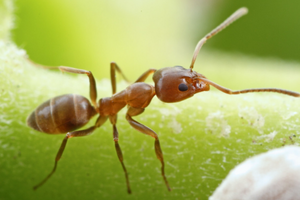
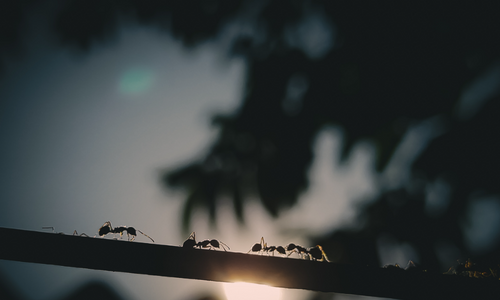


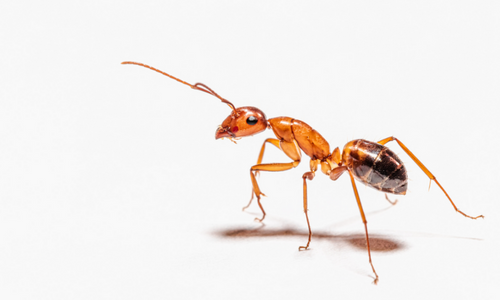
The Best Products 2024
Formicarium
Formicarium
Ant Farm
Ecosystem
Entomology supplies
Test Tube Packs
Pipettes
Feeding Dishes
Ant Foods
Ant Nectar
Feeders
Eco-Fresh Rice Worms
Fly Larvae
Kits
Terrarios
Nest Kit
Ant Farm Sand
Ant Farm Neon Gel
Ant Farm Ecosystems
| Ant Farm For Classroom | Light-up Ant Habitat |
| Ant House With Feeding Area | Wall Hanging Ant Farm |
| An ecosystem with live ants | Ant farm for Preschool |
| Pet Anthill Ant House | Nest Insect Castle |
| Glow In The Dark Ant Farm | Aquariums For Ants |
| Ant Farm With Instructions | Ant Farm With Queen |
| LED Ant Farm for Live Ants | Connectable Ant Farm |
| Ant Farm For Kids | New Large Plaster Ant Farm |
| Pocket colony | Ant Farm With Queen |
Ant Farm Supplies
| Feeder | Feeding Area |
| Tunneling sand | Tunnel starter tool |
| Ecological Ant farm gel | Ants farming aphids |
| Nutrition and Care | Ants farming mushrooms |
| Ecological blue gel | Fungus for ant farms |
| Handcrafted Wood | Ant habitats |
| Ant Plastic Tubes | Ant Glass Tubes |
| Food for ants | Ant Farm Nectar |
| Ant Farm Live Insects | More Supplies |
Live Ants For Sale
| Live Ants | Best ant species |
| Coolest Ants To Keep | Interesting Ants |
| Fungus-farming ants | Exotic ants |
| Big Ants | Buy Queen Ant |
| Buy Worker Ants | Buy Soldier Ants |
| Domestic ants | Fungus farming ants |

